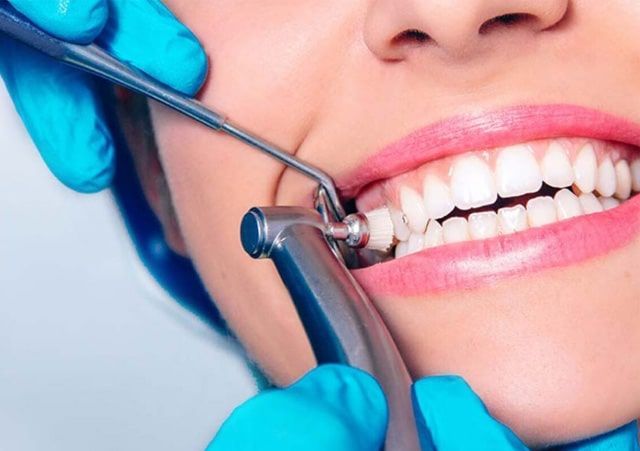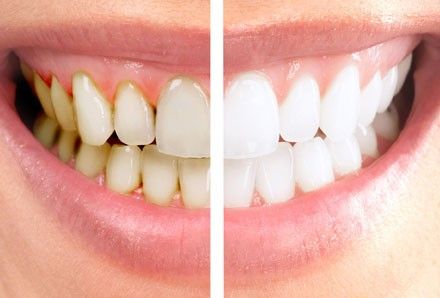
TEETH SCALING AND POLISHING
Introduction
Teeth scaling and polishing are essential components of dental hygiene and preventive dental care. This procedure helps remove plaque, tartar, and stains from the surface of teeth, promoting oral health and maintaining a bright smile. In this comprehensive guide, we’ll explore the process of teeth scaling and polishing, its benefits, techniques, and what to expect during and after the procedure.
Understanding Teeth Scaling
Teeth scaling, also known as dental scaling or root planing, is a dental procedure aimed at removing plaque and tartar buildup from the surface of teeth and along the gumline. Plaque is a sticky film of bacteria that forms on teeth, while tartar, also called calculus, is hardened plaque that can’t be removed by brushing alone.
During teeth scaling, a dental hygienist or dentist uses specialized instruments called scalers or ultrasonic scalers to carefully remove plaque and tartar from the teeth. This process involves scaling both above and below the gumline to ensure thorough cleaning and prevent gum disease.
Benefits of Teeth Scaling
Teeth scaling offers numerous benefits for oral health, including:
- Prevention of Gum Disease: By removing plaque and tartar, teeth scaling helps prevent gum disease, such as gingivitis and periodontitis, which can lead to gum recession, tooth loss, and other serious dental problems.
- Improved Oral Hygiene: Scaling promotes better oral hygiene by eliminating bacteria and debris that can contribute to bad breath, tooth decay, and other dental issues.
- Healthier Gums: Scaling reduces inflammation and irritation of the gums, leading to healthier gum tissue and reducing the risk of gum recession and tooth loss.
- Enhanced Aesthetics: Scaling removes surface stains and discoloration, leaving teeth cleaner and brighter, thus enhancing the appearance of the smile.
The Teeth Polishing Process
Teeth polishing is typically performed immediately after scaling to smooth the surface of the teeth and remove any remaining stains. This process involves using a polishing tool, such as a prophy cup or brush, along with a specially formulated polishing paste.
The dental hygienist or dentist applies the polishing paste to the teeth and then uses the polishing tool to gently buff the teeth, removing surface stains and smoothing out rough areas. The polishing process not only improves the appearance of the teeth but also helps prevent plaque buildup by creating a smooth surface that is more resistant to bacterial adhesion.
Techniques Used in Teeth Scaling and Polishing
Hand Scaling: In hand scaling, dental instruments such as scalers and curettes are used to manually remove plaque and tartar from the teeth. This technique allows the dental professional to feel for rough spots and effectively clean hard-to-reach areas.
Ultrasonic Scaling: Ultrasonic scaling involves the use of an ultrasonic scaler, which uses high-frequency vibrations to break up and remove plaque and tartar from the teeth. This technique is faster and more efficient than hand scaling and is often preferred for deep cleaning procedures.
Air Polishing: Air polishing, also known as air abrasion, uses a combination of air, water, and a specially formulated abrasive powder to remove surface stains and plaque from the teeth. This technique is gentle and minimally invasive, making it suitable for patients with sensitive teeth or gums.
What to Expect During the Procedure
Before the teeth scaling and polishing procedure, the dental professional will conduct a thorough examination of your teeth and gums to assess your oral health and identify any areas of concern. Local anesthesia may be used to numb the gums and minimize discomfort during the procedure, especially if deep cleaning is needed.
During the scaling process, you may hear scraping sounds as the dental instruments remove plaque and tartar from your teeth. Some pressure and mild discomfort may be experienced, but the procedure is generally well-tolerated.
Following scaling, the teeth polishing procedure is performed to smooth the surface of the teeth and remove any remaining stains. This part of the process typically takes less time and is more comfortable than scaling.
Aftercare and Maintenance
After teeth scaling and polishing, it’s important to maintain good oral hygiene practices to prolong the benefits of the procedure. This includes:
- Regular Brushing and Flossing: Brush your teeth at least twice a day and floss daily to remove plaque and food particles from between your teeth and along the gumline.
- Routine Dental Checkups: Visit your dentist for regular checkups and professional cleanings to ensure that your teeth and gums remain healthy.
- Healthy Lifestyle Habits: Avoid smoking, limit sugary foods and drinks, and maintain a balanced diet to promote overall oral and general health.
By following these guidelines and maintaining a consistent oral hygiene routine, you can keep your teeth clean, healthy, and free from plaque and tartar buildup.
Conclusion
Teeth scaling and polishing are essential procedures for maintaining optimal oral health and preventing dental problems such as gum disease and tooth decay. By removing plaque, tartar, and stains from the surface of the teeth, scaling and polishing promote healthier gums, improved oral hygiene, and a brighter smile. If you’re due for a dental cleaning, don’t hesitate to schedule an appointment with your dentist or dental hygienist to keep your smile in top condition.


